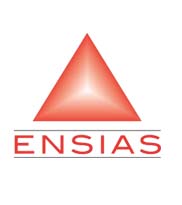- Accueil
-
L'Ecole
-
FORMATIONS
-
FORMATION INGENIEUR
-
Nouvelles filières offertes
- Ingénierie Intelligence Artificielle (2IA)
- Smart Supply Chain & Logistics (2SCL)
- Business Intelligence & Analytics (BI&A)
- Cybersécurité, Cloud et Informatique Mobile (CSCC)
- Data and Software Sciences (D2S)
- Génie de la Data (GD)
- Génie Logiciel (GL)
- Ingénierie Digitale pour la Finance (IDF)
- Smart System Engineering (SSE)
- REGLEMENT DES ETUDES DE L’ENSIAS CYCLE INGENIEUR
-
Nouvelles filières offertes
-
FORMATION INGENIEUR
- FORMATION CONTINUE
-
Recherche
- INTERNATIONAL
- ENTREPRISES
- VIE ESTUDIANTINE
- BIBLIOTHEQUE
LES DERNIÈRES INFORMATIONS
A new approach for histological classification of breast cancer using deep hybrid heterogenous ensemble
| Titre | A new approach for histological classification of breast cancer using deep hybrid heterogenous ensemble |
| Publication Type | Journal Article |
| Year of Publication | 2022 |
| Authors | Zerouaoui, H, Idri, A, O. Alaoui, E |
| Journal | Data Technologies and Applications |
| Pagination | 1-34 |
| Mots-clés | Borda Count, Breast Cancer, Computer aided diagnosis, Convolutional neural network, Convolutional neural networks, Decision trees, Deep convolutional neural network, Deep neural networks, Digital pathologies, Diseases, Empirical evaluations, Ensemble methods, F1 scores, Histological images, Image classification, Images processing, Medical imaging, Nearest neighbor search, Statistical tests, Support vector machines |
| Abstract | Purpose: Hundreds of thousands of deaths each year in the world are caused by breast cancer (BC). An early-stage diagnosis of this disease can positively reduce the morbidity and mortality rate by helping to select the most appropriate treatment options, especially by using histological BC images for the diagnosis. Design/methodology/approach: The present study proposes and evaluates a novel approach which consists of 24 deep hybrid heterogenous ensembles that combine the strength of seven deep learning techniques (DenseNet 201, Inception V3, VGG16, VGG19, Inception-ResNet-V3, MobileNet V2 and ResNet 50) for feature extraction and four well-known classifiers (multi-layer perceptron, support vector machines, K-nearest neighbors and decision tree) by means of hard and weighted voting combination methods for histological classification of BC medical image. Furthermore, the best deep hybrid heterogenous ensembles were compared to the deep stacked ensembles to determine the best strategy to design the deep ensemble methods. The empirical evaluations used four classification performance criteria (accuracy, sensitivity, precision and F1-score), fivefold cross-validation, Scott–Knott (SK) statistical test and Borda count voting method. All empirical evaluations were assessed using four performance measures, including accuracy, precision, recall and F1-score, and were over the histological BreakHis public dataset with four magnification factors (40×, 100×, 200× and 400×). SK statistical test and Borda count were also used to cluster the designed techniques and rank the techniques belonging to the best SK cluster, respectively. Findings: Results showed that the deep hybrid heterogenous ensembles outperformed both their singles and the deep stacked ensembles and reached the accuracy values of 96.3, 95.6, 96.3 and 94 per cent across the four magnification factors 40×, 100×, 200× and 400×, respectively. Originality/value: The proposed deep hybrid heterogenous ensembles can be applied for the BC diagnosis to assist pathologists in reducing the missed diagnoses and proposing adequate treatments for the patients. © 2022, Emerald Publishing Limited. |
| URL | https://www.scopus.com/inward/record.uri?eid=2-s2.0-85140306559&doi=10.1108%2fDTA-05-2022-0210&partnerID=40&md5=52f113ae4cf2b14566d0b92c7140ffe1 |
| DOI | 10.1108/DTA-05-2022-0210 |
Revues:
LIENS UTILES
Localisation
Contactez-nous
ENSIAS
 Avenue Mohammed Ben Abdallah Regragui, Madinat Al Irfane, BP 713, Agdal Rabat, Maroc
Avenue Mohammed Ben Abdallah Regragui, Madinat Al Irfane, BP 713, Agdal Rabat, Maroc
![]() Télécopie : (+212) 5 37 68 60 78
Télécopie : (+212) 5 37 68 60 78
![]() Secrétariat de direction : 06 61 48 10 97
Secrétariat de direction : 06 61 48 10 97
Secrétariat général : 06 61 34 09 27
Service des affaires financières : 06 61 44 76 79
Service des affaires estudiantines : 06 62 77 10 17 / n.mhirich@um5s.net.ma
CEDOC ST2I : 06 66 39 75 16
Résidences : 06 61 82 89 77
- Compteur de visiteurs:635,780
Education - This is a contributing Drupal Theme
Design by WeebPal.
Design by WeebPal.



































